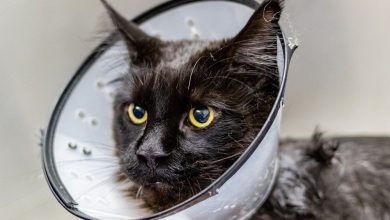With Social Prescribing, Art and Volunteering Can Be Medicine

Last spring, Tia Washington, a 52-year-old mother of three in Dublin, California, received a stern warning from her doctor: If she didn’t quickly get her high blood pressure under control, she risked ending up in the emergency room. . .
He wrote a prescription for blood pressure medication and urged her to also see a health coach. Mrs. Washington reluctantly agreed.
“I didn’t want to die,” she said.
To her surprise, the health coach wanted to talk about more than vital signs. Ms. Washington found herself explaining how much she disliked doctors (and medications). How she tended to meet the needs of work or family before her own. How his work had created “tremendous stress”.
Together, they decided that Ms. Washington would take two weekly movement classes, speak regularly with a nurse practitioner and receive free fruits and vegetables from a government “food as medicine” program.
At the end of the conversation with the health coach, Ms. Washington said, the message was clear: “Tia, take care of yourself. You exist.
Ms. Washington’s experience is just one example of how a practice called social prescribing is being explored in the United States, having been adopted in more than 20 other countries. The term “social prescribing” was first popularized in Britain after being practiced there in various forms for decades. Although there is no universally accepted definition, social prescribing generally aims to improve health and well-being by involving people in non-clinical activities that address underlying problems, such as Isolation, social stress and lack of nutritious food have been shown to play a crucial role in determining who stays healthy and for how long.
For Ms. Washington, who is one of thousands of patients who have received social prescriptions from the nonprofit Open Source Wellness, the experience has been transformative. She found a less stressful job, started eating healthier and learned simple ways to move more during the day. About a year later, she was able to stop taking blood pressure medications completely.
Elsewhere in the United States, similar programs are underway: At the Cleveland Clinic, doctors prescribe nature walks, volunteer work and ballroom dancing for geriatric patients. In Newark, an insurer partnered with the New Jersey Performing Arts Center to offer glassblowing workshops, concerts and museum exhibits to patients. A Utah nonprofit connects mentally ill patients with community gardens and helps them participate in other activities that provide meaning. And universities have begun directing students toward arts and cultural activities like comedy shows and concerts as part of their mental health initiatives.
This approach has also caught the attention of the Federal Reserve Bank of New York’s community development team, which will bring together experts over the next year to discuss how social measures can help improve the good -be in low-income neighborhoods.
The referral process is not new among community health professionals and social workers. Social prescribing differs by providing a type of accountability coach, called a “liaison worker” in Britain, who assesses clients’ needs and interests and then connects them with local organizations, including community groups. volunteers and cultural institutions.
In recent years, the English national health system has hired 1,000 new liaison officers, with the aim of making social prescribing accessible to 900,000 people by 2024. But the implementation of such a plan in the United States United States, which does not have a socialized health care system, would be much more complicated, experts say.
“There is reason to be skeptical about how big this will go,” said Daniel Eisenberg, professor of health policy and management at the Fielding School of Public Health at the University of California, Los Angeles. . “Our healthcare system tends to only make very incremental changes, and I think all the biases inherent in the system favor more acute medical care and intensive care. »
If social prescribing can help prevent people from going to emergency rooms for routine complaints, potentially saving billions of dollars, it could provide more incentive for health insurance providers to help cover the costs, experts estimate.
Horizon Blue Cross Blue Shield, New Jersey’s largest health insurer, is participating in a study examining whether an art prescription program will improve patients’ quality of life and reduce health disparities. Later, the company will find out if the prescriptions can also save money by reducing patients’ reliance on emergency rooms for their regular health care needs.
While previous research on social prescribing suggests that it can improve mental health and quality of life and could reduce doctor visits and hospitalizations, many studies have been small, dependent on self-assessment of patients and carried out without a control group.
The potential benefits have made social prescribing “a very hot topic,” said Jill Sonke, research director at the University of Florida’s Center for Arts in Medicine. She is working with British researchers to identify all the social prescribing programs in the United States – the number now exceeds 30 – and find out what worked and what didn’t.
These programs are not a panacea, Dr. Sonke said, and implementing them on a larger scale in America has many pitfalls. If social prescriptions are not accessible to the uninsured or underinsured, for example, or if people do not feel welcome in the places addressed to them, then “the system is not doing what it is supposed to do.” supposed to do.” she says. “It’s really about everyone having access to well-being and prevention,” she added.
In January, Stanford University and Rutgers University Newark began prescribing arts and cultural activities for students as part of expanding schools’ mental health services. At Rutgers, students can attend cultural events in Newark for free, through a partnership with the New Jersey Performing Arts Center. At Stanford, students are directed to campus events like concerts, art exhibits, or specialty classes, and prescriptions are handled by Art Pharmacy, an Atlanta startup that also offers art prescriptions in Georgia and Massachusetts.
At both schools, any student, including those without mental health issues, can request a referral to a qualified member of staff. Rutgers student leaders can also make referrals.
Kristi Maisha, a Stanford graduate student studying civil engineering, said she decided to participate because she wanted to get away from the intensity of her academic schedule for a while.
“It’s not very beneficial to stay in that headspace all the time,” she said. “So I was definitely looking for something that would get me out of there.”
Ms Maisha chose to attend an impromptu dance class led by a choreographer – although she showed up with some trepidation. “What am I doing?” she thought as class began.
But she followed the instructor’s lead, contorting her torso and limbs, and even her face, into new shapes – relying on her body rather than her brain. The class became a symbol of simply living in the moment, she said, and she felt free from the “planned, predetermined thoughts” that often confined her.
“Now that I know it’s actually a good time, I’m more likely to do it whether they prescribe it or not,” she said.
News Source : www.nytimes.com
Gn Health





